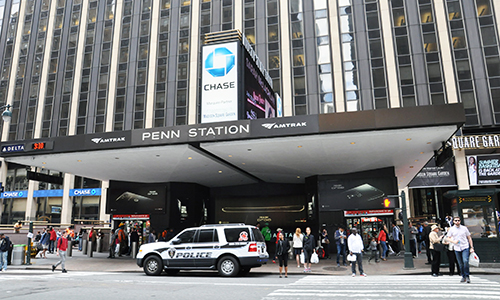Improving Service and Safety at Penn Station in New York City

Making updates without disrupting passengers is a major challenge for the railroad industry.
This is especially true for Penn Station, one of the busiest passenger transportation facilities in the United States. Each day, Penn Station serves more than 600,000 commuter rail and Amtrak passengers.
In late March and early April, Penn Station suffered two train derailments within a week of each other, significantly impacting hundreds of thousands of passengers and commuters in New York City.
 Following both derailments, U.S. DOT’s Volpe Center supported the Federal Railroad Administration (FRA) by sending mechanical engineer Brian Marquis to take measurements at both sites and conduct a track and equipment data analysis.
Following both derailments, U.S. DOT’s Volpe Center supported the Federal Railroad Administration (FRA) by sending mechanical engineer Brian Marquis to take measurements at both sites and conduct a track and equipment data analysis.
In the first derailment, Marquis evaluated a geometric mismatch resulting from the connection of a new rail section with an existing worn rail section. In the second derailment, Marquis investigated a weakened track structure that caused a spreading of the rails under load.
“The track in and around Penn Station is very heavily used and is extremely complicated,” said Marquis.
To prevent future derailments, Marquis believes that the industry needs to look at improvements to track maintenance practices.
“Such improvements require transportation and logistical considerations and a better understanding of the compatibility of equipment and track performance,” said Marquis.
It will also be important to incorporate such considerations in the Railroad Safety Advisory Committee’s pending recommendations on track geometry limits, inspection requirements, and vehicle service requirements, he said.
When government and industry leaders convene, a discussion on safety issues should ultimately lead to revised or augmented regulations to prevent future derailments, Marquis said. The track inspection and rail integrity data collected as a result of both train derailments will benefit not just Amtrak, but the industry as a whole.
